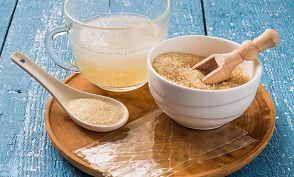
×
Medicinal hydrolysed gelatine is an important material widely used in the production of pharmaceutical products. It is made from the skins, bones, tendons, and ligaments of animals such as pigs and cattle, which undergo strict quarantine and complex physical and chemical treatments. It has a series of properties, including gelling, water retention, adhesion, and solubility. The following is a detailed introduction to medicinal hydrolysed gelatine.
To ensure the quality and safety of medicinal hydrolysed gelatine powder, there are strict requirements for its raw materials:
The raw materials should come from non-epidemic areas to ensure animal health.
The raw materials should come from animals that have been certified healthy by relevant departments.
The raw materials should not come from processing plants that treat them with harmful substances.
No organic solvents such as benzene should be used for degreasing treatments.
Medicinal hydrolysed gelatine is the main raw material for capsules, gel balls, microcapsules, plasma substitutes, and sponges. It is also commonly used as an excipient in other forms like suppositories, tablets, and sustained-release formulations, which are commonly used in traditional Chinese medicine formulations. Gelatin is used in various ways in the pharmaceutical field: directly, like in the production of cod liver oil, and indirectly, like in hard capsules where gelatin is used as a packaging material.
Medicinal hydrolysed gelatine is the main component of hollow capsules, which are composed of cap and body shell made from medicinal hydrolysed gelatine and excipients. They are mainly used for containing solid drugs, like self-made powders, health care products, and pharmaceuticals, solving issues like bad taste and difficult ingestion, thereby making medicine easier to take.
High gelling strength (high bloom strength) gelatin can be used to manufacture hollow hard capsules. Multiple types of gelatins can be mixed or used alone.
Soft capsules, also known as soft gel pills, come in shapes such as round, oval, fish-shaped, and tube-shaped. They are made by enclosing oils or non-water-soluble liquids or suspensions that do not dissolve gelatin in the capsule shell.
Gelatin can provide excellent filling conditions for the contents of soft capsules, effectively preventing reactions between the capsule shell and its contents, thus achieving bioavailability.
Currently, gelatin soft capsules are used in pharmaceuticals, vitamins, nutritional supplements, and cosmetics.
A microcapsule is a tiny container or packaging with a polymer shell. Microcapsule granulation technology involves embedding or encasing solids, liquids, or gases inside tiny capsules, turning them into solid particulate products.
Gelatin's excellent emulsifying and film-forming properties can effectively prevent reactions between the active components inside the microcapsule and oxygen or moisture, while also masking unpleasant smells and tastes.
When used in tablet production, medicinal hydrolysed gelatine can act as a binder or tablet coating. The adhesive properties of gelatin give tablets cohesion, heat resistance, and hardness.
Generally, gelatin is coated on tablets after wet powder granulation, but hydrolysed gelatine can be directly applied to tableting. When used in wet granulation, medicinal hydrolysed gelatine should be prepared as a 5%-10% hot water solution to avoid gelling.
The dissolution rate of tablets is related to the type of gelatin used; the higher the bloom strength, the longer the dissolution time, but the better the physical properties (like adhesion).
Medicinal hydrolysed gelatine can mimic the molecular characteristics of blood cells. Its high quality and high purity make it a raw material for plasma substitute products. In cases where the patient's condition is not severe, a gelatin solution can be used as a plasma substitute. Gelatin products derived from pigs offer better biocompatibility. Learn more about the difference between gelatine and collagen from SEMIX now!

+860573-87998299